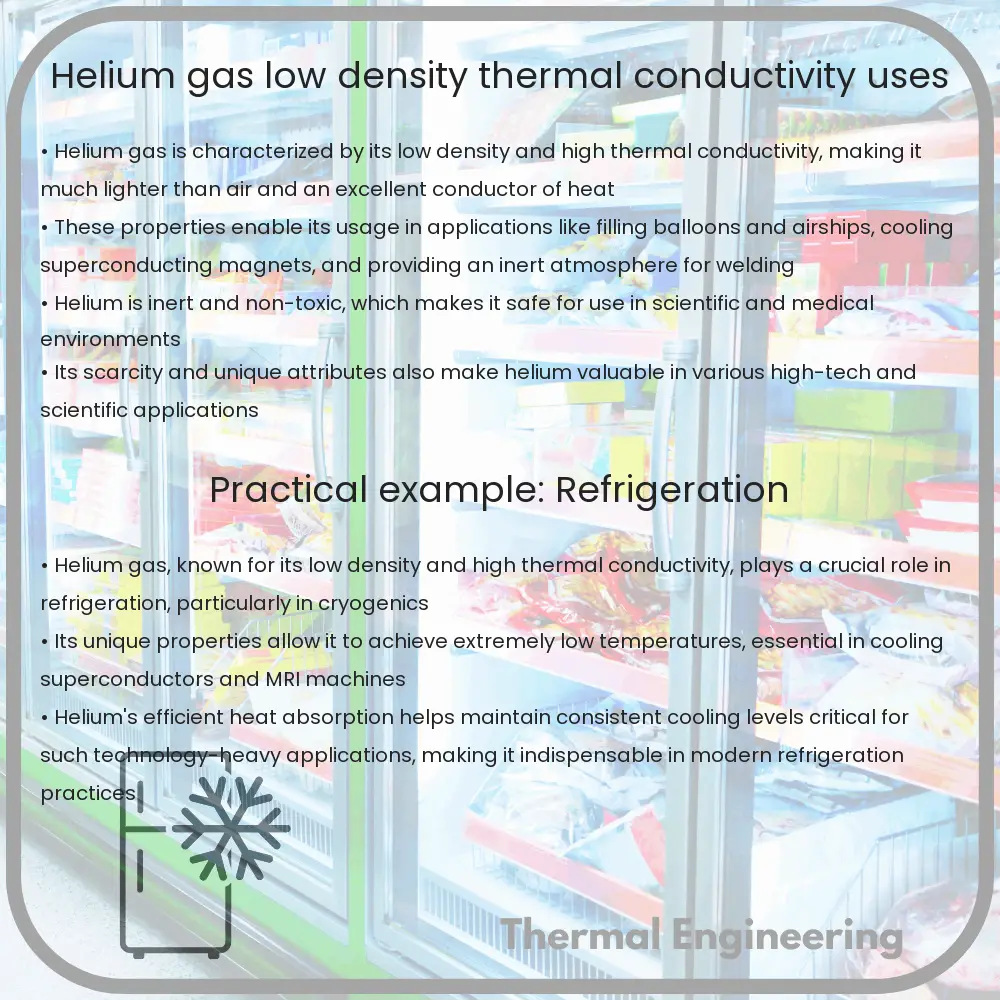Learn about helium gas, its unique properties such as low density and high thermal conductivity, and its diverse applications in industries like cryogenics and aerospace.

Understanding Helium Gas: Properties and Uses
Helium gas is one of the most interesting and useful elements in the periodic table. Known primarily for its low density and high thermal conductivity, helium has a variety of applications that leverage these properties in both everyday life and advanced technological settings.
Properties of Helium Gas
- Low Density: Helium is one of the lightest and least dense elements, with a density of about 0.1786 grams per liter at standard temperature and pressure (0°C and 1 atm). This is primarily because helium’s atomic mass (about 4 u) is very low compared to most other gases.
- High Thermal Conductivity: Helium is also notable for its high thermal conductivity, which is the ability to conduct heat. It has a thermal conductivity of about 0.1513 W/m·K at 300 K, making it a superb coolant in processes that require low temperatures.
- Inertness: Helium is a noble gas, meaning it is extremely non-reactive. This inertness makes it ideal for use in environments where a non-reactive atmosphere is crucial, such as in certain manufacturing processes for electronics.
- Low Boiling and Melting Points: Helium has an exceptionally low boiling point of -268.93°C and a melting point of -272.2°C at atmospheric pressure, properties that are critical for its use in cryogenics.
Applications of Helium Gas
- Cryogenics: Due to its low boiling point, helium is extensively used in cryogenics. This field involves the production and behavior of materials at very low temperatures. Helium is used to achieve and maintain these conditions, particularly in superconducting magnets found in medical imaging devices like MRI scanners.
- Aerospace and Deep Sea Diving: Because of its low density, helium is used to fill balloons and airships. In deep-sea diving, helium is mixed with oxygen to create heliox, which helps prevent divers from experiencing the nitrogen narcosis that occurs when breathing ordinary air under high pressure deep underwater.
- Leak Detection: Helium’s small and non-reactive molecules are ideal for detecting leaks in high-vacuum equipment and sealed containers. It can easily escape from even tiny leaks, which can then be detected using sensitive instruments.
- Fiber Optics and Electronics Manufacturing: The inertness of helium makes it safe for use as a protective atmosphere in the growth of silicon and germanium crystals, and in the manufacture of fiber optics, where impurities can significantly degrade quality.
- Scientific Research: In laboratories, helium is used in a variety of applications from cooling to providing an inert atmosphere for various experiments. Helium-neon lasers, a type of gas laser leveraging helium in conjunction with neon, are used for alignment, holography, and various educational purposes.
Helium is a non-renewable resource, primarily extracted from natural gas fields. Its unique properties make it irreplaceable in many critical applications, which is why its conservation and responsible use are becoming increasingly important in industry and academia alike.